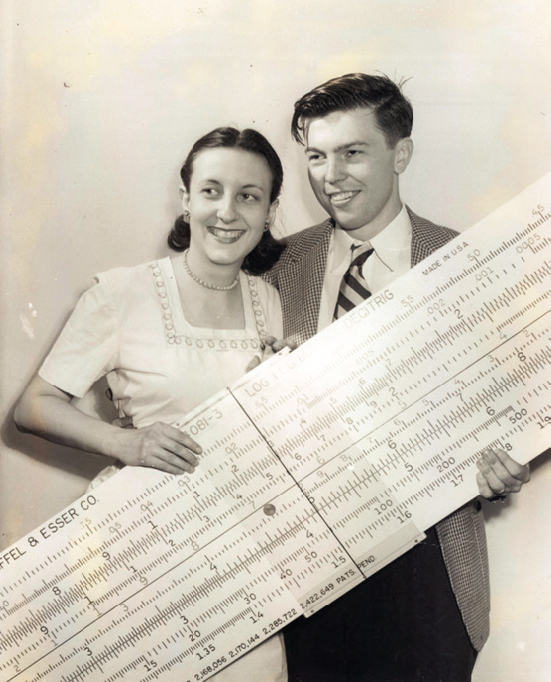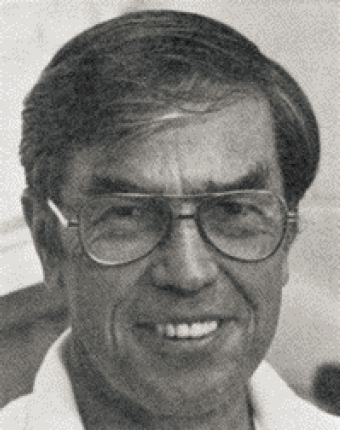JOHANNES WEERTMAN
1924–2018
Elected in 1976
“Contributions and research on deformation of materials at high temperatures and strain rates and on fatigue of metals.”
BY LYLE H. SCHWARTZ
JOHANNES WEERTMAN passed away October 13, 2018, at age 93. His wide-ranging and groundbreaking research spanned creep of crystalline solids; internal friction, fatigue, and fracture of metals; dislocation theory; geothermal energy; mechanics of glaciers; and stability of ice sheets, among others.
Hans was born May 11, 1925, to Roelof “Rudy” and Christina van Vlaardingen Weertman in Fairfield, Alabama. During his school years he got excited about science and math thanks to good teachers. In World War II he enlisted in the US Marines (1943–46) and served in occupied Japan as a corporal. He had intended to pursue chemical engineering but changed his mind when he enrolled in the Carnegie Institute of Technology (now Carnegie Mellon University), where he majored in physics and received his BS in 1948 and his DSc in 1951. His thesis, “Internal Friction and Young’s Modulus of Cold-Worked Copper Single Crystals,” was published joint with James S. Koehler. 1
At Carnegie, Hans met Julia Ann Randall. The two were married February 10, 1950, and honeymooned in New York City for a week. After they finished their theses, they moved to Paris where both were postdocs (1951–52). Hans, a Fulbright
___________________
1 Journal of Applied Physics 24:624(1953); https://doi.org/10.1063/1.1721339.
Postdoctoral Fellow at the École Normale Supérieure, called it a “golden postdoc grand honeymoon.” During a side trip to London and a visit to the nearby US Office of Naval Research, Hans was recruited to the Naval Research Laboratory (NRL) in Washington. Julia was a successful “walk-in” applicant to NRL when they arrived.
Hans worked in solid state physics at NRL from 1952 to 1958, continuing his work on dislocation theory and broadening his interest in materials to include problems of a geologic nature, including glaciology and the migration of subglacial lakes under ice sheets. He wrote several career-defining papers during this period. 2
In 1958–59 he served as a scientific liaison officer for ONR in London. He expected to return to NRL stateside, but while in London he was recruited to join the Materials Science Department at Northwestern University (NU). He was hired as an associate professor and chaired the department from 1964 to 1968, when he was designated the Walter P. Murphy Professor. His early publications and continuing interest in applying deformation concepts to geophysics had also led to his joint appointment in 1963 in the Department of Geological Sciences.
With NU colleague Morris Fine (NAE 1973), the Weertmans contributed to and edited volumes in the early 1960s Macmillan Series in Materials Science based on graduate courses offered at NU. For years these were among the primary materials science textbooks for courses at NU and elsewhere, and the Weertmans’ coauthored book Elementary Dislocation Theory (Collier-Macmillan Ltd., 1964) was still used in NU’s materials science and engineering classes into the 21st century. It was translated into three other languages and republished in 1992 by Oxford University Press.
___________________
2 On creep: Theory of steady-state creep based on dislocation climb. Journal of Applied Physics 26(10):1213 (1955); and, with G.S. Ansell, Creep of a dispersion-hardened alloy. NRL Technical Report 5176 (1959). On glaciers: On the sliding of glaciers. Journal of Glaciology 3(21):33–38 (1957); and Traveling waves on glaciers, Union Géodésique et Géophysique Internationale, Association Internationale d’Hydrologie Scientifique, Symposium de Chamonix, September 16–24, pp. 162–68 (1958).
In the 1970s, as part of a multidisciplinary group studying fatigue, Hans extended the theory of dislocation-induced crack tip formation. He also expanded his work to “hot rocks” and geothermal energy. Spending his summers at Los Alamos he did technical work that led to DOE-funded geothermal research at NU with colleagues in the Chemical and Mechanical Engineering departments. In 1975 he wrote “Water pumped into the deep earth to make steam causes fracturing of rock” 3—words familiar in today’s world of oil and gas extraction by “fracking.” His early work in this field remains “groundbreaking”! Two decades later he published Dislocation Based Fracture Mechanics (World Scientific Publishing Company, 1996).
He was active in service to the profession. He chaired the 1969 Gordon Conference on Physical Metallurgy and served on the governing council of the International Glaciological Society (1968–71 and 1982–83). For the National Academies he was appointed to the 1972–73 steering group of the NAS Ross Ice Shelf Project and chaired the Ad Hoc Panel on Polar Ice Coring (1985–87). As an NAE member he served on the Peer Group Committee for Mining-Metallurgy/Ceramics/Materials Engineering (1977–81; chair 1980–81), Academic Advisory Board (1988–91), and Materials Engineering Peer Committee (2000–01).
He was the associate editor of the Journal of Geophysical Research (1972–75), editorial advisor to the Journal of Glaciology (1972–91), and coeditor of Mechanics of Materials: An International Journal (1980–99).
His groundbreaking work was recognized with numerous honors. In 1960 his seminal contributions in geophysics, initiated at NRL, were honored by the British Antarctic Place Names Committee and recognized by the US Board on Geographical Names with the naming of Weertman Island, situated at 66°58’S, 67°44’W in Antarctica, approximately
___________________
3 Weertman J. 1975. Theory of velocity of earthquake dislocations. GSA Memoirs 142:175–83. Also see Weertman J, Weertman JR. 1975. High temperature creep of rock and mantle viscosity. Annual Review of Earth and Planetary Sciences 3:293–315.
3½ miles long, peak elevation approximately 600 meters (~1,968.5 feet). He went on to receive the Robert E. Horton Award of the American Geophysical Union (1962), Champion H. Mathewson Gold Medal of the Metallurgical Society of AIME for work on creep and fatigue fracture (1977), Acta Metallurgica Gold Medal (1980), and Seligman Crystal of the International Glaciological Society (1983). He was elected to the National Academy of Engineering in 1976 and was a fellow of the Geological Society of America, ASM International, American Physical Society, American Geophysical Union, TMS-AIME, American Academy of Mechanics, and American Academy of Arts and Sciences.
In 2017 TMS renamed its TMS Educator Award the Julia and Johannes Weertman Educator Award, which “recognizes a higher caliber individual who has made outstanding contributions to education in metallurgical engineering and/or materials science and engineering.”
Julia died July 31, 2018. They are survived by their daughter Julia Ann Zerebny and husband Nicholas, son Bruce and wife Leslie Miller, and a grandson.








